Fishing Kayak Necessities vs Luxuries
Capt. Kirk Deardorff, owner of Riversport Kayaks in Homosassa, Florida, agreed to be our guest speaker for our July 1st meeting. Topic: How to rig a kayak for fishing, and he should know, it is his subject of expertise. He also outfits and repairs damaged kayaks as well so who better to come and give us an overview of kayak fishing necessities vs luxuries?
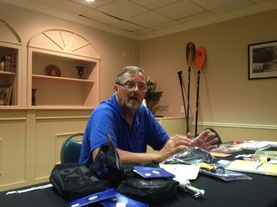
Capt. Kirk, (yes, I'm sure he's heard the reference to Star Trek a gazillion times, so we won't put him through that) started off the meeting by giving a short self-introduction and told us that he, and his wife, Cindy, have owned Riversport Kayaks for almost 11 years. He has his masters degree in Ecomonics and was a Risk Manager for Citrus County for a number of years and walked away from all of that stress to be his own boss and he hasn't regretted that decision for one second. His only disappointment is that he doesn't get out on the water for his own fun as often as he would like to.
He went around the room and identified those who have kayaks and those who do not. Secondly, he wanted to pinpoint specifically what brand and style of kayak each member had. It was a good way to evaluate the experience and knowledge of his audience so that he can educate us accordingly. The kayak spectrum went from WalMart brands all the way to high-end Hobie Pro Anglers. Kirk acknowledged that even the less expensive style kayaks are enough to get you on the water. What was interesting was that he owns two specially designed motor driven boats and he still prefers to paddle around in his kayak. His favorite is a Commander 120 by Wilderness Systems, which is a cross between a canoe and a kayak. You sit down in it. It has a double-tunnel hull so it's very stable. It's a 30 inch wide boat that he can actually stand up in. It has a lawnchair style seat with a canoe style cross bench behind it so you can fold the seat down, store it under the cross bench and sit on the cross bench just line a canoe. The advantage to that boat is that it only weighs 60 lbs. and you can stand up in it.
He brought several brochures for the following fishing kayak manufacturers:
Jackson Kayaks
Wilderness Systems Kayaks
Hobie Kayaks
and briefly explained how the rudder and peddle systems work on the Hobie Pro Angler and the advantages of a hands-free (for fishing) propulsion mechanism that allows you more casts for an increase chance of fish hook ups.
He went around the room and identified those who have kayaks and those who do not. Secondly, he wanted to pinpoint specifically what brand and style of kayak each member had. It was a good way to evaluate the experience and knowledge of his audience so that he can educate us accordingly. The kayak spectrum went from WalMart brands all the way to high-end Hobie Pro Anglers. Kirk acknowledged that even the less expensive style kayaks are enough to get you on the water. What was interesting was that he owns two specially designed motor driven boats and he still prefers to paddle around in his kayak. His favorite is a Commander 120 by Wilderness Systems, which is a cross between a canoe and a kayak. You sit down in it. It has a double-tunnel hull so it's very stable. It's a 30 inch wide boat that he can actually stand up in. It has a lawnchair style seat with a canoe style cross bench behind it so you can fold the seat down, store it under the cross bench and sit on the cross bench just line a canoe. The advantage to that boat is that it only weighs 60 lbs. and you can stand up in it.
He brought several brochures for the following fishing kayak manufacturers:
Jackson Kayaks
Wilderness Systems Kayaks
Hobie Kayaks
and briefly explained how the rudder and peddle systems work on the Hobie Pro Angler and the advantages of a hands-free (for fishing) propulsion mechanism that allows you more casts for an increase chance of fish hook ups.
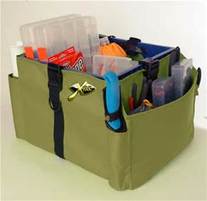
Kirk warned us that the biggest obstacle to overcome when learning how to fish from a kayak is the need to minimize your equipment. He carries one small bag specially designed to hold all the lures he would potentially use on an outing. His necessities include Gulps, jerk baits, bass assassins, skidderwalks, mirrodines (in blue, chrome and black, sometimes white, and sometimes chartreuse), weighted hooks, floating pliers, line cutters and a tape measure. This is a visually noticeable difference from the 12 tackle trays inside two tackle bags that he used to carry on his flats boat when he only ended up using a total of three different lures the entire day. It all comes down to the bare necessities.
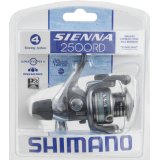
We moved into recommended rods. Kirk shared his opinion, telling us that he prefers to use Shimano brand 2500 series spinning reels, spooled with 10 lb braided fishing line with 25 lb fluorocarbon shark leader all on a 7.5 or 8 ft soft action rod. One of the main challenges of fishing from a kayak is the difficulty to make a long cast from a sitting position. The longer the cast the better your chances of catching a fish on the off chance that you've scared a few that otherwise would have stayed in close proximity. Redfish, like many other species, can feel the displacement of water that a small boat makes as it navigates through the water even at an extremely slow pace. Even a manned kayak with minimal gear will displace some water so the farther you can cast, again, the better your chances of attracting fish that have no idea you've arrived yet. To keep things simple, he only takes two rods with him on his kayak. One of which has a sub-surface artificial lure on it. He replaced the treble hooks with circle hooks and lets it troll through the water behind him as he paddles. The number of trout hits he gets is surprising. The slower you paddle, the higher the lure stays in the water column and because trout tent to be looking upward for food, they can see it from above.
Organizing Your Space....Let's start with rod holders
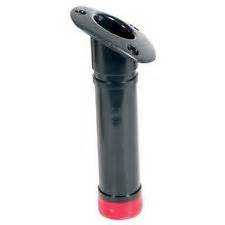
Kirk held up a 30 degree flush mounted rod holder and began to talk about the difficulty in organizing the gear, starting with rods. Most fishing kayaks already have a minimum of two flush mounted rod holders installed on each side of the kayak behind the seat, however, more of these can be added in other locations on the kayak or can be installed on a river kayak to make it functional for fishing if needed. The down-side to this style of rod holder is that if a rod is baited and in the water with a tightly set drag and a large fish bolts with the bait, the rod can quickly be pulled out of the holder before you know it. Kirk prevents that problem by loosening his drag half way (just like RG taught us during our last meeting) so that when something like this happens, and he can't react immediately, he still has time to grab his rod and bring in his catch. The fish may have run with quite a bit of line at this point, but it's better to lose a fish than to lose a rod. He does not recommend a rod leash because it's just one more thing that gets in the way.
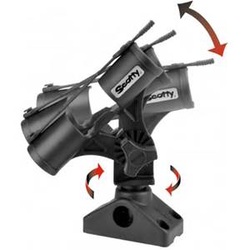
In addition to the flush mounted rod holders he mentioned above, Kirk also told us about a different type of rod holder option called a Scotty Rod Holder that is a wee bit more advanced than the basic flush mount.
This rod holder can be secured to many different spots on a kayak but is typically mounted within arms reach in front of the kayak seat. The benefit of this type of rod holder is that it can be adjusted horizontally and vertically and be easily removed all together with a quick turn of a knob.
This rod holder can be secured to many different spots on a kayak but is typically mounted within arms reach in front of the kayak seat. The benefit of this type of rod holder is that it can be adjusted horizontally and vertically and be easily removed all together with a quick turn of a knob.
On a side note, He told us to organize our kayaks the same way each time we go out so that we get familiar at every launch where all of our gear is located and it becomes a routine. Like assigned seats in school. You should know where everything is all the times.
Where to Store the Paddle
We moved on to paddle storage. Kayaks are sold with a wide variety of paddle storage options from paddle parks made out of bungee cord to hard plastic clips that allow the paddle shaft to 'snap' in place.
Kirk's problem with each and every one of these paddle park systems is the noise that's made, no matter how careful you are, when securing the paddle shaft to a holder like this. In most cases, even the smallest amount of noise will alert a fish and it'll flee the area before you even have time to cast. Not a good way to use your time out there. He suggested investing in a paddle leash and just lay the paddle quietly in the water and let it float. It's the best use of time, makes no noise and it can easily be retrieved because it's leased to the kayak.
Dry Bags
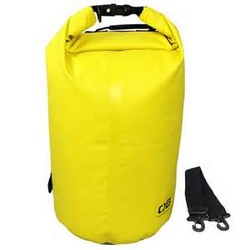
Everybody on a boat or kayak should have one! The benefit of a dry bag over your basic household Ziplock bag is the floatability. It's fine to keep your necessities (keys, phone, camera, etc.) in a watertight Ziplock bag, but if it hits the water for some reason, it's still going to sink like everything else and what good will that do you? Sure, it's still dry, but how are you going to find it in four feet of murky water? There's nothing worse than losing stuff out there on the water.
Anchors - Lots of Choices When it Comes to Anchors
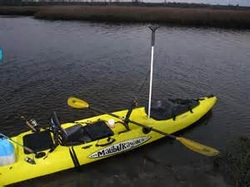
Stake Out Poles -
Great for places with soft muck bottoms.
These can be pushed right through the scupper holes.
It can go down through a ring tied off to the side of the boat.
It can be used with an anchor trolley system.
Some that come in 8 and 10 ft can actually double as a push pole.
Great for places with soft muck bottoms.
These can be pushed right through the scupper holes.
It can go down through a ring tied off to the side of the boat.
It can be used with an anchor trolley system.
Some that come in 8 and 10 ft can actually double as a push pole.
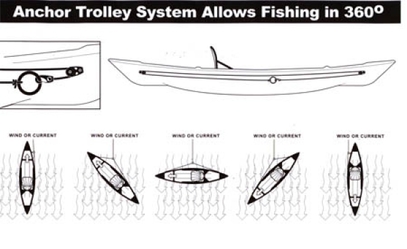
Anchor Trolley System
This is basically a pulley system.
One pulley is secured to each end of the kayak.
A thin rope is threaded through each pulley.
And the tag ends of the rope are tied to a ring.
The anchor line is also tied to the ring.
This device allows you to anchor in various positions with or against the current.
This is basically a pulley system.
One pulley is secured to each end of the kayak.
A thin rope is threaded through each pulley.
And the tag ends of the rope are tied to a ring.
The anchor line is also tied to the ring.
This device allows you to anchor in various positions with or against the current.
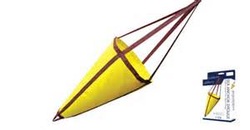
Sea Anchor
This is a device that looks like a wind sock. Kirk himself uses one to drift fish. The down-side to that thing is that a caught fish will sometimes get fishing line tangled in the sea anchor line.
This is a device that looks like a wind sock. Kirk himself uses one to drift fish. The down-side to that thing is that a caught fish will sometimes get fishing line tangled in the sea anchor line.
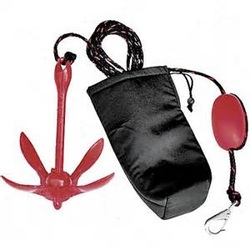
One think that Kirk strongly recommended was a simple buoy system for the anchor. There will come a time when your anchor rope detaches itself from your yak. Maybe due to a loose knot or something. Likewise, there will come a time when you are anchored down and your hook has become embedded in a mangrove branch or oyster rock. If you have a marker for where your anchor is (like a small floating buoy) then you don't have to worry about pulling your anchor up. You can voluntarily detach yourself from the anchor system, take care of your hook problem, and simple paddle back to reattach your anchor if you wish. Why? Because the floating buoy marks the spot where you left your anchor.
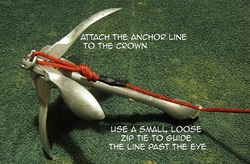
Everybody always ties their anchor rope only around the ring at the top of the stem. But what happens when the anchor claws get stuck on the rocks? In a kayak you have almost no chance of getting that out. Kirk pointed out that these types of grappling anchors have another eyelet ring at the bottom, too. Most people don't realize that. The best practice is to tie the knot on the bottom of the anchor instead of at the top. That way, if it does get stuck, one quick tug of the rope should actually "un" stick the anchor from its rocky trap.
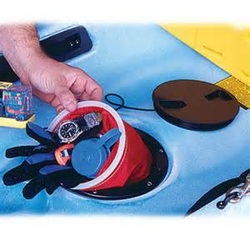
Need more storage room? Kirk can install a kayak hatch kit for you. But that hatch won't be 100% secure until you've put the hatch cap on tight. As he talked about hatch sizes he mentioned one of the Jackson Brand kayaks that has a specially designed long hatch that can double as a bait well or live well if you wish.

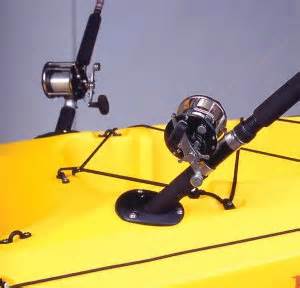
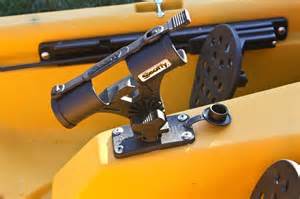
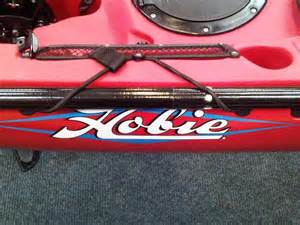
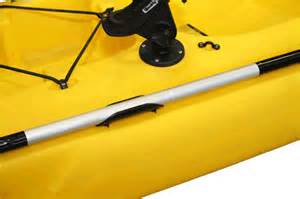
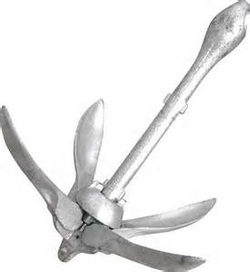
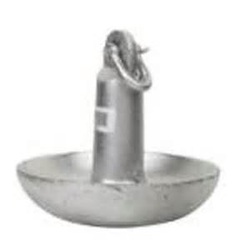
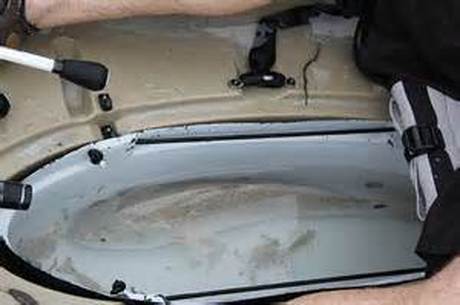
 RSS Feed
RSS Feed